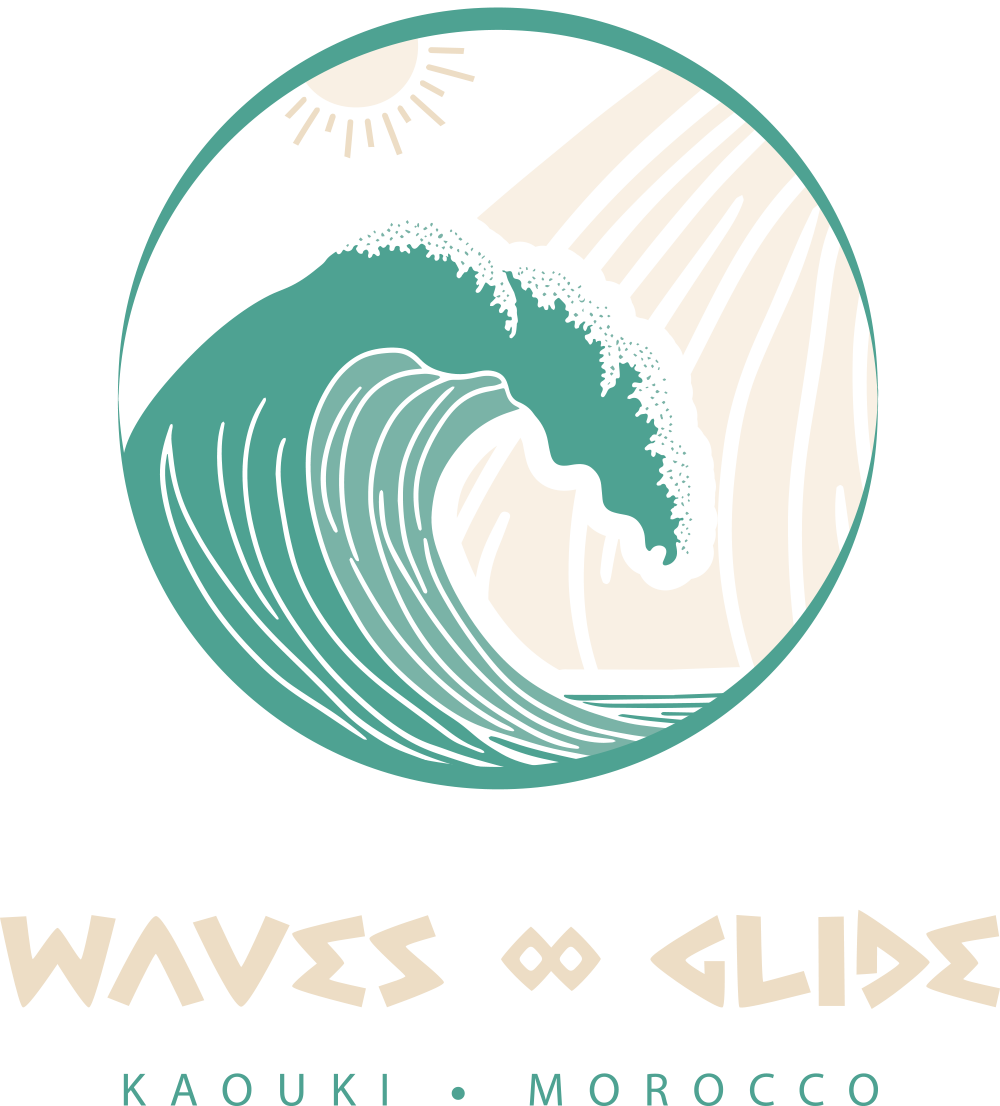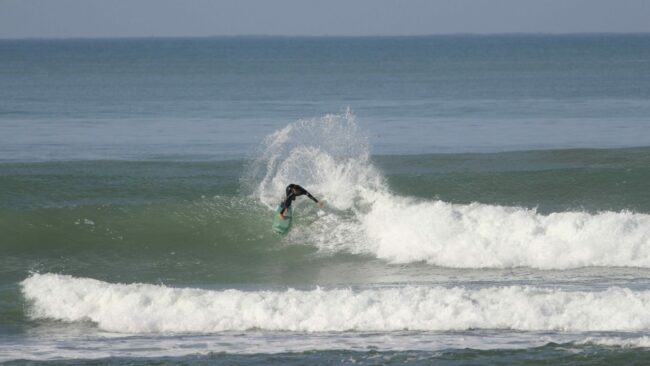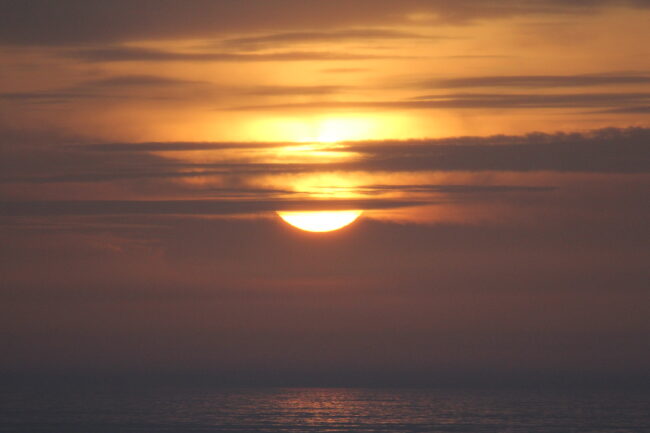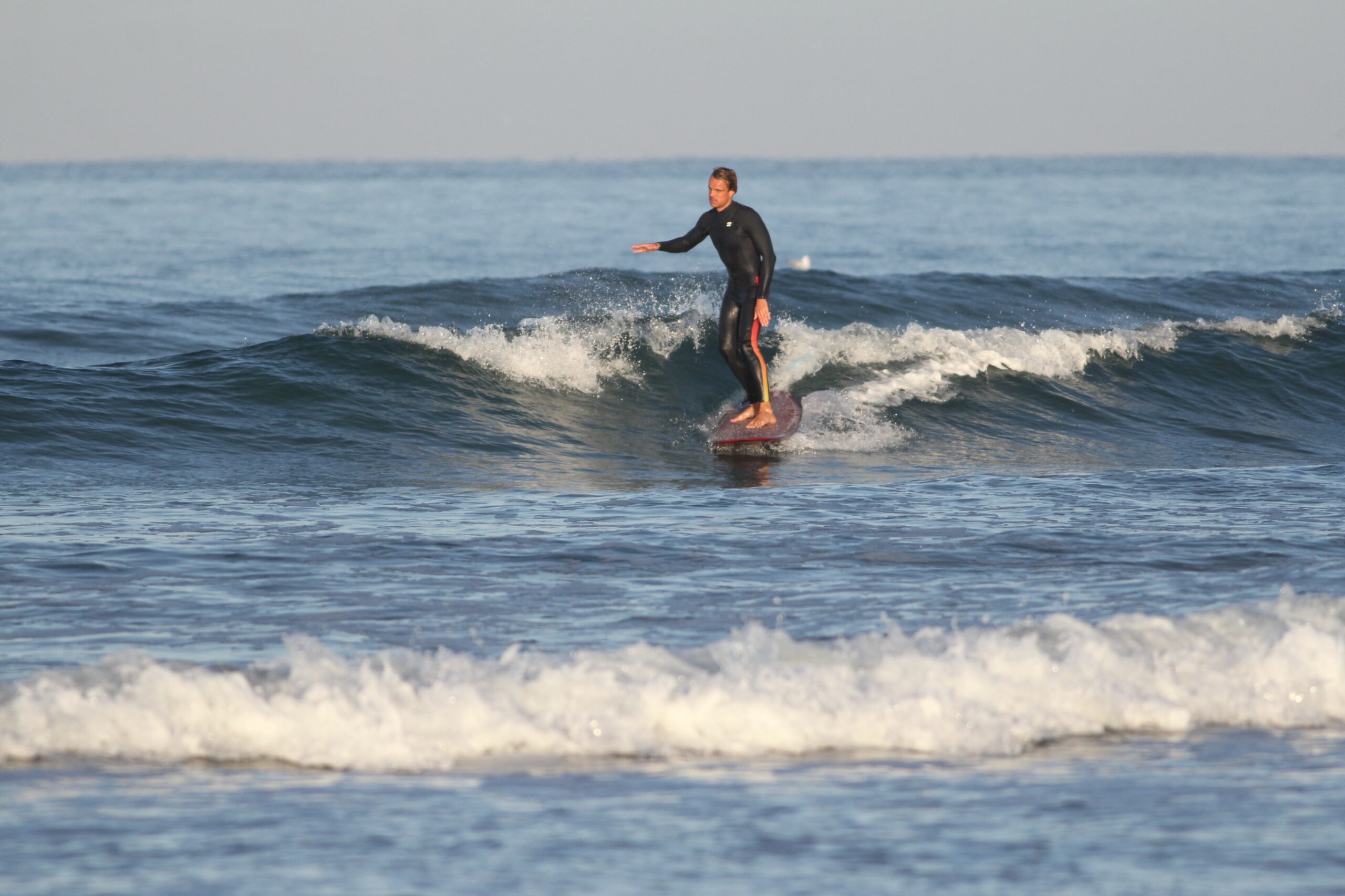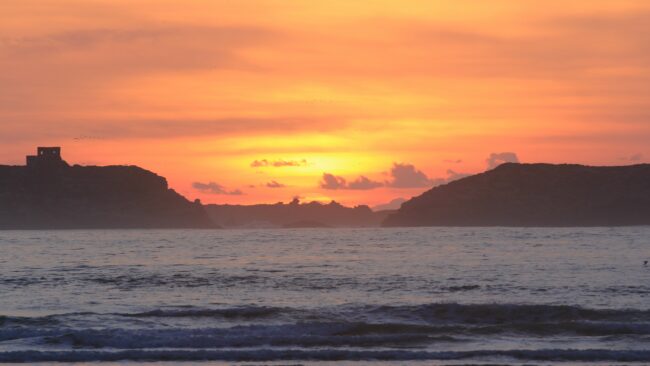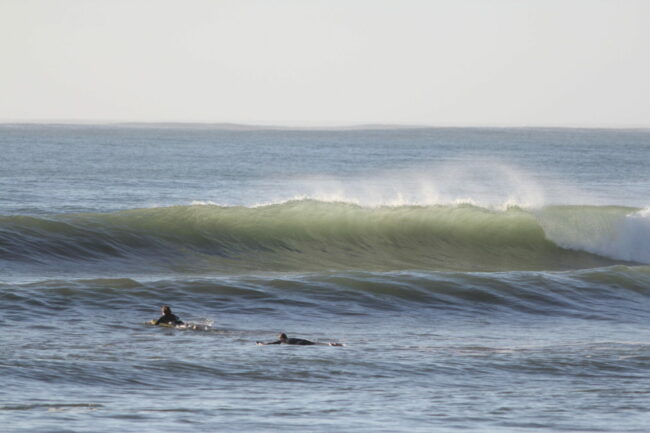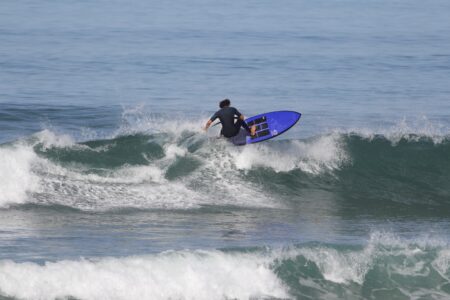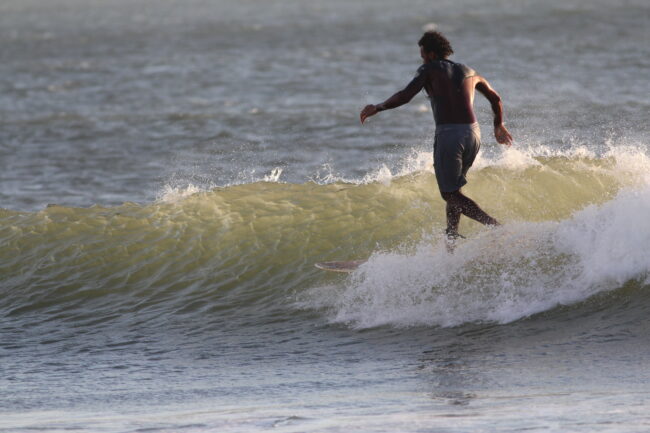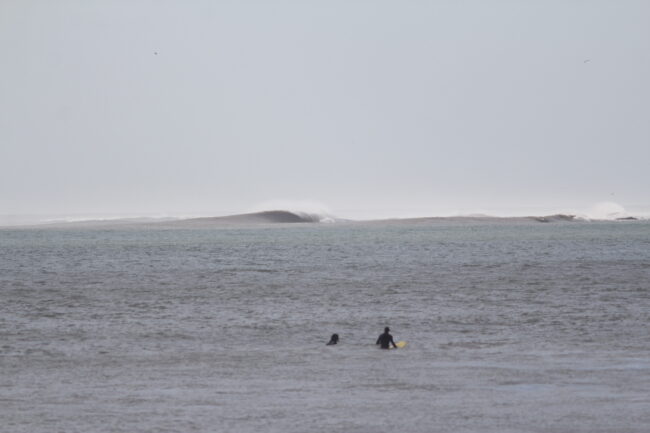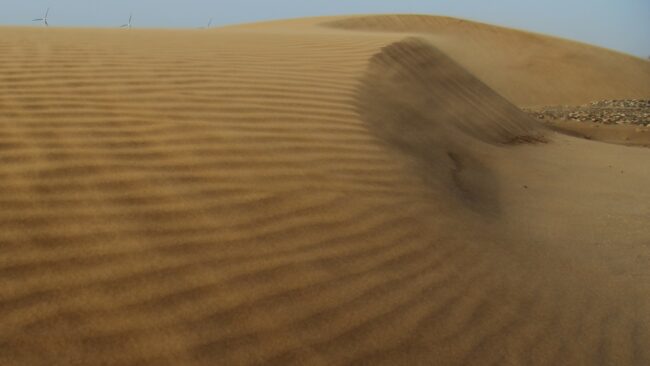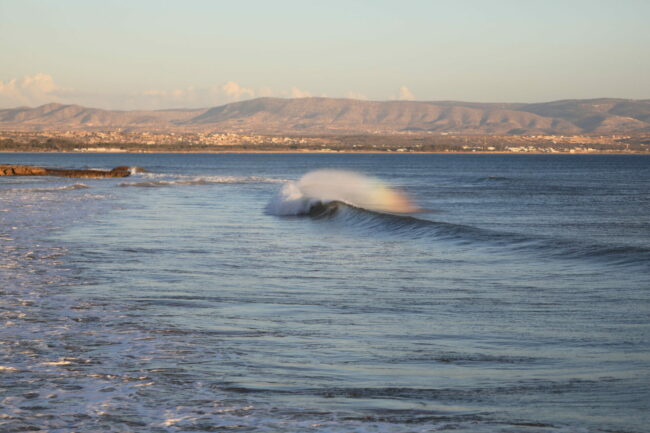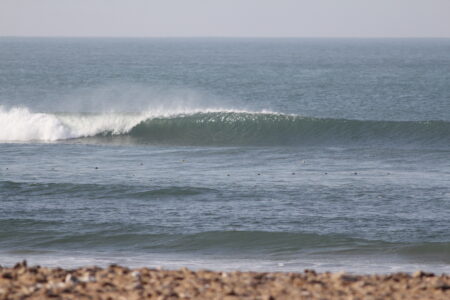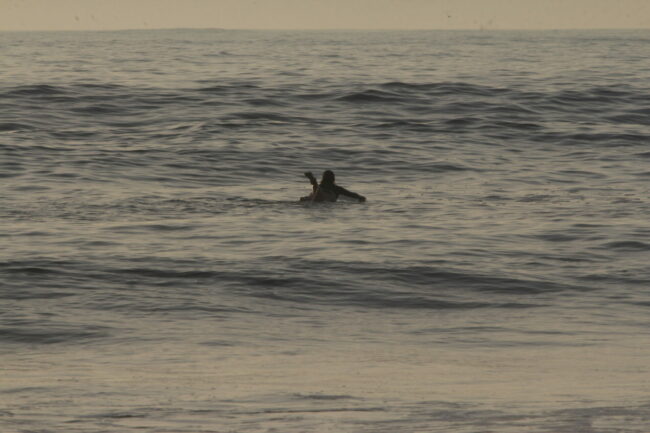Essaouira
Surf, Nature and Cultures
Essaouira stands out historically and geographically as a unique place among the mythical cities of Morocco and the world. What sets it apart is that it didn’t wait for the invention of tourism, real estate development, modern transportation, or communication tools to become attractive to travelers, merchants, and migrants. It has always remained a vibrant place for life and exchange among the communities living there.
Surrounded by shifting dunes, islets, shallow waters, forests, hills, rivers, and the ocean, Essaouira is naturally positioned at the crossroads of swells, wind, sand, birds, and spirits.
Beyond the Waves
Surfing in the Essaouira region means experiencing quality waves along one of Morocco’s most diverse and preserved coastlines, all while soaking in the unique atmosphere of a historical, charming, and distinct coastal city. Seeing, feeling, and understanding the layers of history radiating from the “Purple Islands,” the port, the medina, the mausoleum of Sidi Amougdoul, the dunes, forests, and the rocky shallows of Cape Sim is as impactful as visiting Fez, Santiago de Compostela, former Constantinople, Damascus, or Amsterdam. Except, of all these historical cities, only Essaouira lets you surf and still holds its identity as a land of peace and universality surrounded by nature.
Essaouira’s architectural, climatic, geological, geopolitical, spiritual, and historical uniqueness its medina, fishing port, coastline, and region earned it a UNESCO World Heritage Site designation in 2001. Shaped by a long and multicultural history, and by a geography that shelters unique Moroccan ecosystems, Essaouira former diplomatic capital of the Sharifian Empire under Sultan Mohammed ben Abdallah, founder of the city’s name, medina, and port has always welcomed ocean lovers, sailors, fishermen, travelers, diplomats, merchants, pilgrims, artists, artisans, sages, nomads, slaves, soldiers, healers, and poets from all peoples. For over 25 years, it has become a hub of sustainable surf tourism and a must-visit destination for nature lovers, yoga practitioners, kitesurfers, windsurfers, wing foilers, and of course, surfers.
Sanctuaries and Pilgrimages
Located on a rocky peninsula surrounded by forests, sand dunes, and coastal relief, Essaouira and its surroundings captivate sporty, nature-loving travelers. While Essaouira is more famous for wind sports than wave sports, that doesn’t mean you can’t surf there. In fact, not only can you ride waves in the region, but you can also play with the wind more than anywhere else and enjoy summer wind swells and its cooling effect.
Thirty kilometers north of Essaouira, on the road to Safi, is Moulay Bouzerktoun, named after a local saint and home to a well-known mausoleum. It is the first surf-developed area of a coastline where coves, fields, dunes, hills, cliffs, and beaches stretch uninterrupted across the Essaouira province. It’s the “home spot” of Boujemaa Guilloul, windsurf, surf, stand-up paddle, and kitesurf prodigy and international ambassador of Morocco and Essaouira. Windsurf and surf camps, shops, cafés, and inns provide various services here.
At the entrance of the city, Essaouira Bay, guarded by the mausoleum of Sidi Amogdoul, is the city’s prime watersport hub. Kitesurf, windsurf, and surf schools and clubs operate year-round, near great beachfront cafés and restaurants. Essaouira Bay is the region’s “backup spot,” meaning it’s the only place where waves remain accessible to all levels when the swell becomes massive elsewhere.
Sidi Kaouki, 25 km south of Essaouira on the road to Agadir, was also built around a saint’s shrine visited by passing travelers. This place, with its mysteriously sounding name, opens the road to the southern spots of the Amazigh (Haha) region and has become a surf hotspot. Today, surfers, kitesurfers, and windsurfers continue this pilgrimage tradition. The area holds the province’s most beautiful wave both in form, length, and power located at the rocky point of Cape Sim, naturally sheltered from dominant winds thanks to its orientation and terrain, and perfectly positioned to receive swells refracted by the surrounding underwater features.
Further north, south, or between these three major surf sites lie other less developed sanctuaries, more or less accessible, surrounded by nearly untouched nature and ideal for surfing under specific swell, tide, and wind conditions. We can only hope these places become designated nature reserves to preserve these wild gems from mass urbanization that has affected other surf spots like Imsouane, Taghazout, Mirleft, etc.
Essaouira’s region also occasionally hosts some world-class giant waves, reserved for experienced and well-equipped big wave riders. Moroccan surf pioneers Saad Abid and Jérôme Sahyoun have discovered and revealed several of these gems between Imsouane and Tafadna.
Essaouira’s Climate
Essaouira has two unique climatic traits compared to the rest of the Moroccan coast:
It often runs opposite to the country’s thermal trends, offering the coolest temperatures during national heatwaves and the mildest (sometimes even warm) during colder spells.
It is the windiest city in Morocco not just by reputation but by reality, with potentially the highest number of windy hours over the years. Though its strong winds might scare off fans of the legendary Agadir sun and calm blue-green waves, Essaouira boasts more beautiful and diverse nature, a relaxed and authentic vibe, less oppressive heat, cleaner waters (free from industrial or domestic pollution), and the opportunity to surf nearly every morning year-round or all day for two-thirds of the year, barring extreme weather.
In the coldest part of winter, temperatures can range from 5°C before dawn in the countryside to 32°C at midday under the sun. It’s always milder by the ocean at night, as the sea retains heat longer than land. In the height of summer, temperatures can exceed 40°C in the region and drop to 15°C at night during the coolest moments of the season. Notably, the medina is spared from the extreme combo of scorching wind and burning sun.
Water temperatures range from 15°C at the coldest to 20°C at the warmest. This depends more on the wind direction and duration than the season. North and northwest winds cool the water, while southern and southwestern winds bring warmer currents.
Surf Seasons in Essaouira
In Essaouira and the North Atlantic in general:
Spring is the season of coastal and thermal winds, but also of milder temperatures, longer days, blooming landscapes, and the last distant swells that create beautiful waves on rocky points, bays, and favorable underwater configurations.
Summer brings small wind swells, residual tropical swells, heat, shortening days, breezy afternoons, vacationers on the beaches, fruits, sardines, and goat meat. It’s the perfect season to learn to surf.
Autumn is the season of mild weather and golden light. The wind is supposed to die down, the first rains revive the land, and the first long-period swells create perfect, consistent waves at surf spots previously dormant. It’s an ideal season for surf discovery, with quieter beaches than in summer and more wave variety.
Winter has the shortest days and the freshest mornings and evenings. Swells are longer and more frequent, the ocean more restless, but most days are sunny. Some years bring episodes of wind, cold, rain, warmth, or storms one tied to the other.
Between these extremes, it’s not uncommon to experience all four seasons in a single day, week, or month.
We can’t conclude without mentioning climate change. Our personal 30-year observations, testimonies from local elders in Morocco and Europe, the media’s coverage of climate anomalies and disasters, and their increasing frequency and severity all lead to the same realization: we can only partially understand, control, or predict nature, life, and climate.
The unpredictability and occasional fury of the elements are there to remind us and surfing is a refreshing way to learn how to adapt to nature and its forces.
«What I see in nature is a grand design that we can only understand imperfectly and which should fill a thinking person with a sense of humility…» Albert Einstein.
Cultures of Essaouira
A small, human-scale tourist town, Essaouira offers not only inspiration for the senses and the soul, but also a wide variety of tourist infrastructure.
From refined Moroccan and international cuisine to traditional local meals and global fast food, there’s something to satisfy every taste, budget, and craving usually made with quality ingredients and skilled cooks.
Essaouira and its region are home to subsistence agriculture and livestock farming that produce high-quality “organic/beldi” foods. Olive oil, argan oil, honey, goat and lamb meat, vegetables and fruits, goat cheese all have flavor. Spices, and aromatic, medicinal, and energizing herbs have shaped part of Essaouira’s history and reputation in Morocco and beyond.
The cool coastal waters, abundance of rocky seabeds, and absence of large-scale industry support the quality of Essaouira’s fish though like everywhere else in the world, marine resources are decreasing in number, quality, and diversity. Seafood lovers will still find plenty to enjoy in Essaouira as long as the ocean plays along…
